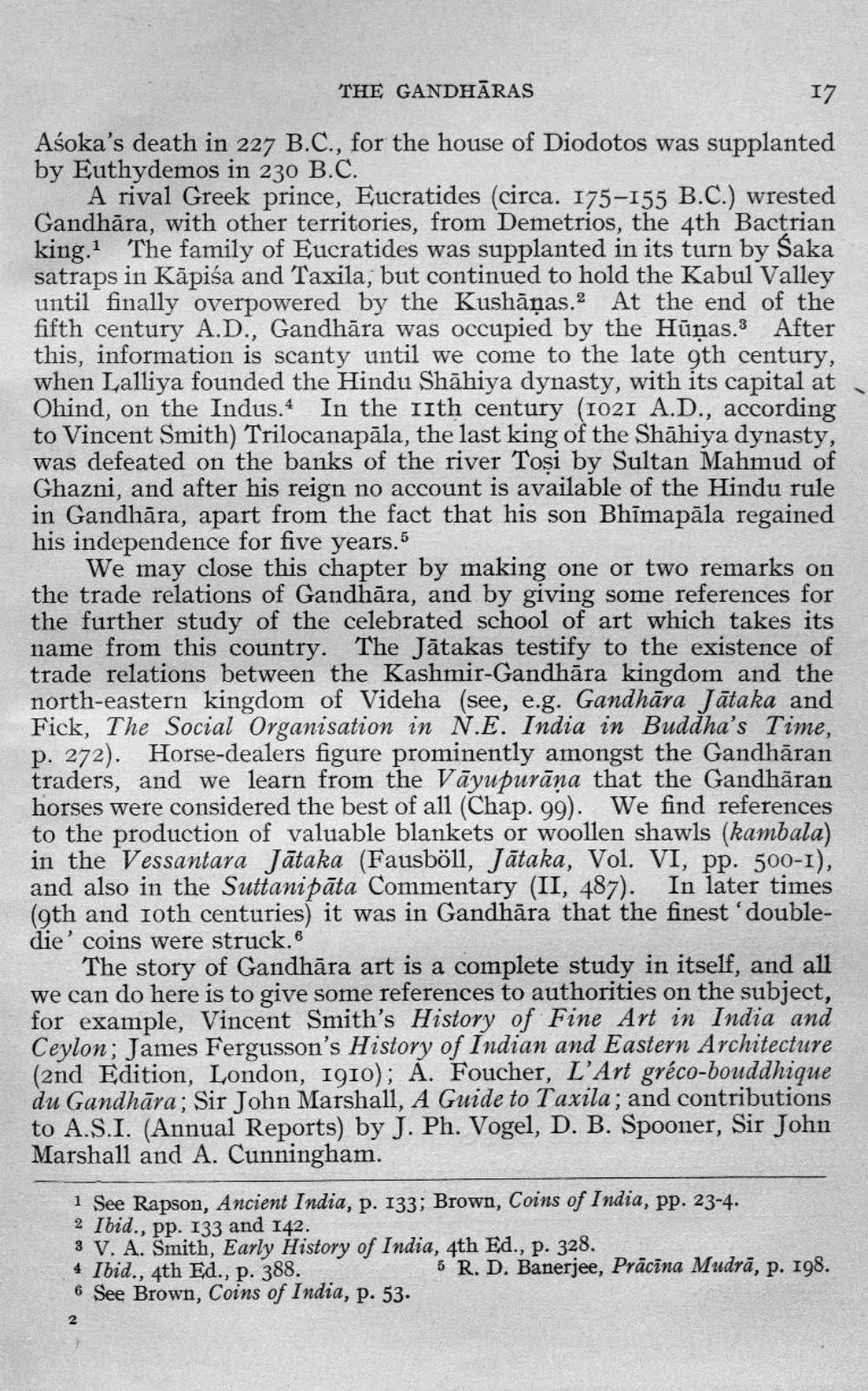________________
THE GANDHĀRAS
17 Asoka's death in 227 B.C., for the house of Diodotos was supplanted by Euthydemos in 230 B.C.
A rival Greek prince, Eucratides (circa. 175-155 B.C.) wrested Gandhāra, with other territories, from Demetrios, the 4th Bactrian king. The family of Eucratides was supplanted in its turn by Saka satraps in Kāpisa and Taxila, but continued to hold the Kabul Valley until finally overpowered by the Kushāṇas. At the end of the fifth century A.D., Gandhāra was occupied by the Hūņas.3 After this, information is scanty until we come to the late 9th century, when Lalliya founded the Hindu Shāhiya dynasty, with its capital at Ohind, on the Indus. In the IIth century (1021 A.D., according to Vincent Smith) Trilocanapāla, the last king of the Shāhiya dynasty, was defeated on the banks of the river Toși by Sultan Mahmud of Ghazni, and after his reign no account is available of the Hindu rule in Gandhāra, apart from the fact that his son Bhīmapāla regained his independence for five years. I
We may close this chapter by making one or two remarks on the trade relations of Gandhāra, and by giving some references for the further study of the celebrated school of art which takes its name from this country. The Jātakas testify to the existence of trade relations between the Kashmir-Gandhāra kingdom and the north-eastern kingdom of Videha (see, e.g. Gandhāra Tātaka and Fick, The Social Organisation in N.E. India in Buddha's Time, p. 272). Horse-dealers figure prominently amongst the Gandhāran traders, and we learn from the Vāyupurāna that the Gandhāran horses were considered the best of all (Chap. 99). We find references to the production of valuable blankets or woollen shawls (kambala) in the Vessantara Jataka (Fausböll, Jataka, Vol. VI, pp. 500-I), and also in the Suttani pāta Commentary (II, 487). In later times (9th and 10th centuries) it was in Gandhāra that the finest 'doubledie' coins were struck.6
The story of Gandhāra art is a complete study in itself, and all we can do here is to give some references to authorities on the subject, for example, Vincent Smith's History of Fine Art in India and Ceylon; James Fergusson's History of Indian and Eastern Architecture (2nd Edition, London, 1910); A. Foucher, L'Art gréco-bouddhique du Gandhāra; Sir John Marshall, A Guide to Taxila; and contributions to A.S.I. (Annual Reports) by J. Ph. Vogel, D. B. Spooner, Sir John Marshall and A. Cunningham.
1 See Rapson, Ancient India, p. 133; Brown, Coins of India, pp. 23-4. 2 Ibid., pp. 133 and 142. 3 V. A. Smith, Early History of India, 4th Ed., p. 328. 4 Ibid., 4th Ed., p. 388.
5 R. D. Banerjee, Prācīna Mudrā, p. 198. & See Brown, Coins of India, P. 53.




